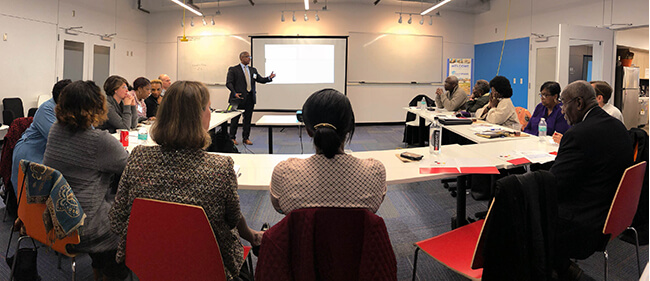Pharmacists can help patients keep their
health on track by partnering to manage chronic conditions.
By Jane E. Rooney
Chances are you know someone who suffers from a chronic disease. Six in ten Americans live with at least one chronic disease, like heart disease, stroke, cancer or diabetes, according to the National Center for Chronic Disease Prevention and Health Promotion (NCCDPHP). These and other conditions (such as Alzheimer’s disease, epilepsy and chronic lung disease) are the leading causes of death and disability in America, and they are also a leading driver of healthcare costs. The American Public Health Association (APHA) indicated that the five most costly and preventable chronic conditions cost the United States nearly $347 billion—30 percent of total healthcare spending—in 2010. NCCDPHP data show that 90 percent of the nation’s $3.3 trillion in annual healthcare expenditures are for people with chronic and mental health conditions.
According to the APHA, the U.S. could decrease treatment costs by $218 billion per year and reduce the economic impact of disease by $1.1 trillion annually by investing in prevention and treatment of the most common chronic diseases. Pharmacists are ideally positioned to help patients navigate chronic disease prevention and management. In addition to assuring the accurate filling of prescriptions and medication orders, pharmacists can provide key screenings and immunizations, determine which medications are best and talk through medication requirements with patients and their caregivers, ultimately improving health and lowering costs.
“Pharmacists’ involvement can increase access to patient care services and improve health for patients. There are data to back that up,” said Dr. Kelly Ragucci, vice president of professional development at AACP. “There is a recognition of the importance of preventive medicine and getting pharmacists integrated into primary care physician offices as part of a healthcare team.” As part of his pharmacy practice transformation efforts as AACP president, Dr. Todd Sorensen has set a goal to have 50 percent of primary care offices engage in a formal relationship with pharmacists by 2025. “Team-based care is emerging as a key strategy in delivering better care in value-focused payment systems,” Sorensen said in his opening remarks at the AACP Annual Meeting in July. “Creating these partnerships will open up new employment opportunities for pharmacists—whether directly within medical practices or through other collaborative arrangements that improve chronic care management.”
Prioritizing Prevention and Wellness
“Pharmacists are uniquely qualified to serve as part of the interprofessional medical team. We are physician extenders. There is still a shortage of primary care physicians, and pharmacists can help close the gap,” said Dr. Seena Haines, professor and chair, Department of Pharmacy Practice, The University of Mississippi School of Pharmacy. “I can speak to the role that pharmacists can have as part of a primary care team: to have prescriptive authority, see patients, review labs and make adjustments to pharmacotherapy. Pharmacists can pursue several specialties through board certification. The care plan for patient and caregiver needs that pharmacists are qualified to address relative to chronic disease is significant. As artificial intelligence continues to grow I see that impacting dispensing needs across diverse settings. It creates a significant opportunity in the community setting to offer enhanced clinical services. There are community-focused initiatives underway nationwide to help educate and train pharmacist directed clinical services.”
One example, Haines continued, is the Community Pharmacy Enhanced Services Network, which includes 33 states in networks across the country. North Carolina was one of the first states to align chain and independent pharmacies into partnerships through a mentorship model and coaching network to help shift practice models and workflow toward enhanced clinical services. She also sees pharmacists stepping up efforts when it comes to preventing chronic diseases.
“We’ve engaged in annual wellness visits across the country,” Haines pointed out. “We are working with insurers on health and wellness coaching benefits. We are uniquely qualified to assist in those areas. It really does align with our education and training. We’ve seen some national traction with the National Academy of Medicine and other pharmacy associations trying to combat stress and burnout. We know the role that stress plays in the burden of chronic disease. I absolutely think we can provide patients with health and wellness strategies and consult routinely toward the achievement of health and wellness goals.”
She believes that a transdisciplinary approach, working with government as well as non-government sources, can position pharmacists to help prevent chronic diseases, such as diabetes and obesity, and prevent worsening or onset of disease. More than ever, pharmacists must be trained to meet the needs of an aging population. “We want to think about that prevention side more and gain better control of disease states such as cardiovascular disease at younger stages in life so the impact is less as we age.”



